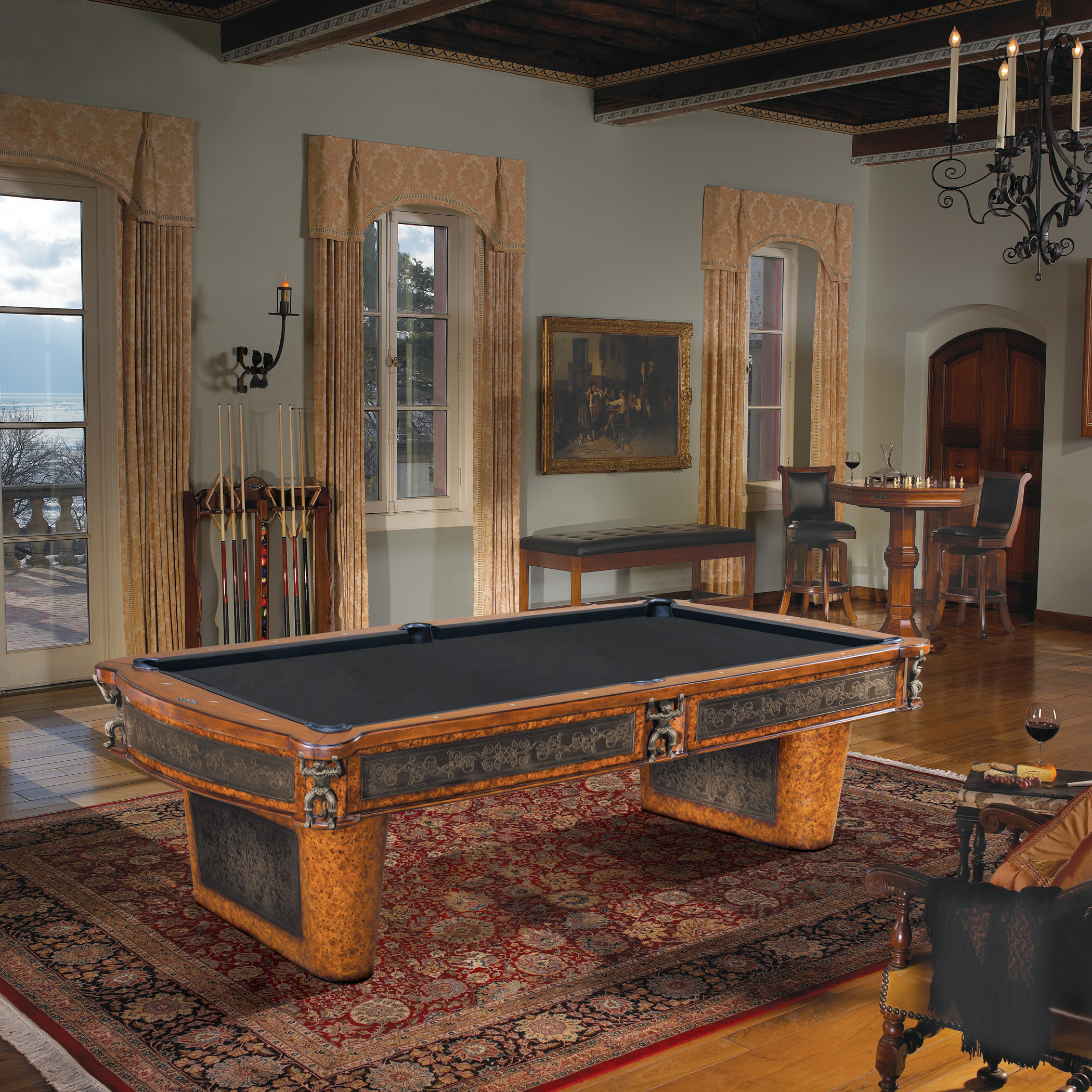
Noting that taverns and saloons had become the primary outlets for billiard tables (as opposed to private homes of the wealthy, who were John Brunswick's typical customers), Bensinger, who was 51 when he took over, wondered if there might be a market for Brunswick bars and for back-of-the-bar fixtures. As Moses's son Benjamin later recalled, "I remember the great pains he took to see that we were open-minded," and that attitude spurred a course of synergistic expansion that still characterizes the company. John Brunswick died two years later, but his son-in-law Moses Bensinger, who had been groomed to take over the company by Brunswick, became president in 1890 after a brief interregnum. By 1884, Brunswick had merged with its two primary rivals, creating a $1.5 million monolith that was not only the largest billiards equipment operation in the world but larger than all its competitors combined. As it happened, Brunswick had moved into billiards just as the game gained popularity. He even developed a rubber-engineering division to improve table cushions. Most billiards equipment of the time was crude and unreliable, and Brunswick acquired slate quarries and lumberyards to control the quality of his raw materials and keep them away from competitors.

And not just on the game's tables but also on its balls and cues. By this time he had abandoned carriages altogether and was concentrating on billiards.

Seeing the opportunity to expand, he established sales offices, complete with large billiard parlors, in Chicago in 1848, New Orleans in 1852, and St. Satisfied customers spread the word of Brunswick's elaborate handiwork, and he was receiving orders from across the nation within two years of his entrance into the business. He had always been flexible in his trade and prided himself on his work, saying, "If it is wood, we can make it, and we can make it better than anyone else." Thus inspired, his shop turned out its first billiard table within a few months. The table's consummate craftsmanship and ornate detailing transfixed Brunswick. At a dinner party among friends one night, the host took Brunswick aside to show him his billiard table. He had settled in Cincinnati five years earlier and had quickly become a leader in the city's civic and business communities as a successful carriage maker.


But the business was built on the Runyonesque charms of billiards and bowling, which, although imported from Europe, are now quintessentially American.īilliards was still a fairly new game in America in 1845 when a 26-year-old Swiss immigrant named John Moses Brunswick first encountered it. And they recognized the appeal of water recreation in the rising affluence of the 1950s, setting the stage for the company's next phase, which is its focus today. They reinvented billiards and bowling from pastimes in fancy parlors to the sports of gritty taverns to suburban everyman activities. These leisure-time sports are ingrained in the popular culture largely because of the family that ran Brunswick for four generations.
#Brunswick pool tables cincinnati full
It's Paul Newman as "Fast Eddie" Felson in The Hustler, Ralph Kramden bowling a few games after driving a bus all day, and a weekend on the lake, with a cooler full of Bud and the sky dappled with light so you don't even care if the fish aren't biting. It's the world's largest recreation company, generating more revenue from its pool tables, bowling products, and boats than any of its competitors. First with billiards, then bowling, and now with pleasure boats, it capitalized on early America's budding interest in leisure activities and has built on it ever since. (FORTUNE Small Business) – Brunswick is the company that gave Americans play.


 0 kommentar(er)
0 kommentar(er)
